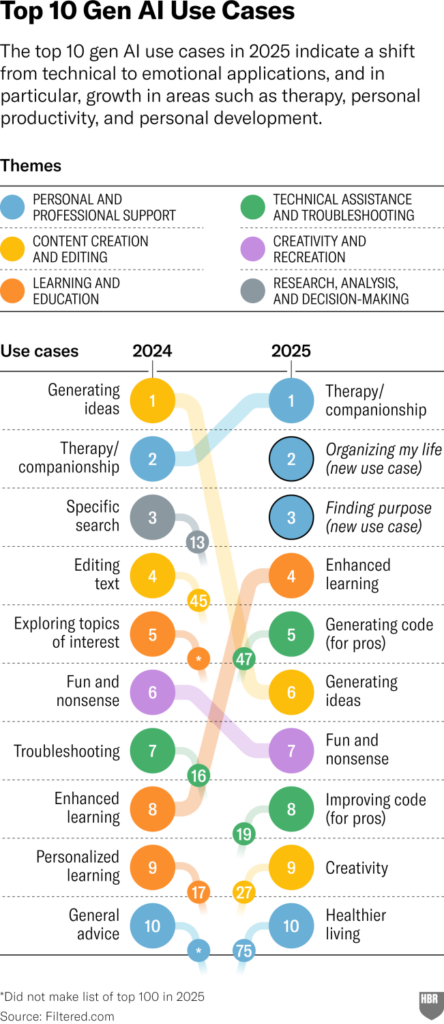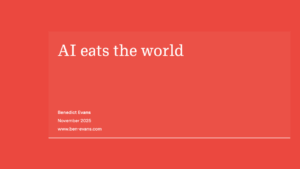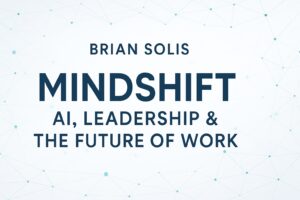
How do you use generative AI?
Is it to create content, collaborate on work, ideate, learn, code, or seek direction?
What if I told you that, according to one research study, the number one application for generative AI is to help with mental health and loneliness?
According to one study, people are increasingly turning to AI for emotional support, personal growth, and self-improvement.
This is the 2nd year in a row when Marc Zao-Sanders publishes his research in Harvard Business Review, that explores “How People are Really Using Gen AI.”
As a digital anthropologist, it’s fascinating. As a digital analyst, I have many questions, especially around the subjective methodology and scope. I wouldn’t view these results as scientific nor do I agree with their accuracy. But let’s set that aside for now and have fun with the findings at a human level.

According to this research effort, we see top use cases shifting from curiosity, collaboration, and productivity to something more personal and growth oriented, with the top three including therapy/companionship, organizing my life, and finding purpose. The latter two represent new uses in 2025.
The number one use case is both surprising and not surprising, “therapy/companionship.” It’s surprising to see humans use artificial intelligence to virtualize treatment and healing. It’s not surprising though that people find it more approachable to embrace synthetic intimacy. Years ago, for example, I studied the willingness of men to open-up to AI for therapy and adults in general to seek medical advice from AI. In both cases, the sentiment was similar. It was not only easier to speak candidly and openly to a machine, it was cathartic and beneficial. People could be honest with AI versus another human being, without the fear of being judged.
The same could be true for organizing my life and finding purpose. When people recognize the opportunity to change or improve, it’s easy to put it off or ultimately deny that anything urgent or ultimately needed at all. But with AI, people can express themselves freely, from the comfort of anywhere, to receive nonjudgmental advice and insights.
To see enhanced learning jump from number 8 in 2024 to number 4 in 2025 is also testament to people recognizing AI as a companion for self-improvement and personal and professional development. And with creativity jumping from number 27 to number 9 and healthier living climbing from 75 to 10, 80% of the top 10 gen AI use cases are aimed at personal and professional development (I’m aggregating four classifications as they reflect behavior that would overlap on a VENN diagram instead of representing four separate behaviors/intentions/aspirations. For example, Creativity is categorized as “content creation and editing” and “fun and nonsense” is classified as “creativity and recreation.”
A New Chapter in Human + Machine Augmentation
In these high-level findings, several profound patterns emerge, with each pointing to a fundamental Mindshift in how humans and machines are co‑evolving (A mindshift = fundamentally changing how we perceive and interact with the world and how we take different actions as a result. Embracing new perspectives enables us to adapt, innovate, and lead effectively in times of change!)

- From Tool to Confidant — The fact that “Therapy / companionship” has surged to become the #1 Gen AI use case signals a pretty big shift: AI is no longer just a productivity hack or tool but an emotional anchor — always‑on, non‑judgmental, and deeply human in its appeal. Think of the movie Her! Users are turning to AI for grief processing, self‑reflection, and mental wellbeing in a way that mirrors traditional human relationships, marking the dawn of AI as an everyday social actor in our lives.
- Lifescaling Personal Growth — Imagine having your own personal Marie Kondo or Victor Frankl or Brent Brown or Alan Watts or you name your favorite guru, always ready, on-demand! Closely tied to this emotional turn, we see “Organize my life” and “Find purpose” ascending the rankings. This reflects a collective yearning or desire for AI to do more than optimize tasks and work, but to also guide our inner journeys — what I’d describe as the rise of an AI-powered “Augmented Kaizen” archetype in the Novel Economy, where technology serves as a co‑pilot in personal transformation and the pursuit of continuous improvement.
- Maturing Personal and Professional Capacity — On the workplace front, “Generate code,” “Improve Code,” and “Enhance learning” have gained ground, underscoring Gen AI’s continuing role as a collaborative partner in upskilling and knowledge work. At the same time, the decline of “Generate ideas” and “Fun & nonsense” suggests that users are trading shininess or newness for substance — demanding that AI deliver real, practical value rather than mere novelty.
- Blurring Home and Work — Perhaps most striking is the almost equal split between personal and business use cases — roughly half of AI interactions bridge both domains. This dual‑lens adoption illustrates how AI is weaving seamlessly into the fabric of everyday life, dissolving traditional boundaries between our private and professional selves.
- A New Social Contract with AI — The digital anthropologist in me is fascinated by the emergent social contract we’re forging with these technologies. We once feared AI would alienate or replace us; now we invite it into our most intimate spaces — entrusting it with our emotions, aspirations, and even our sense of purpose. This demands new governance rooted in privacy, ethics, and digital literacy, ensuring that AI agency remains aligned with human agency and values, not like the social contract many of us unwillingly forged with our digital devices and social networks. For leaders, the imperative is clear: build AI‑native ecosystems that empower both human and agentic collaborators — not just to get things done, but to enrich the human experience itself.
Generation N’s AI Mindshift: Forging the Novel Economy of Creativity, Connection & Change
We are witnessing a Mindshift in how people interact with AI.
The diverse applications of generative AI across both personal and professional domains illustrate how individuals are integrating this technology into their daily lives. This aligns with what I call the “Novel Economy,” where traditional rules no longer apply, and new opportunities emerge that require innovative thinking and adaptability .
In my research, I documented the emergence of “Generation Novel” (Gen N), a cross-generational cohort shaped by disruptive technologies, digital experiences, and global events. The widespread adoption of generative AI tools, as highlighted in the article, exemplifies how Gen N is leveraging technology to redefine work, creativity, and personal growth.
This initial research provides evidence of a broader cultural transformation, where technology serves as a catalyst for reimagining human potential and societal norms. This is a time for a Mindshift, one where open-mindedness, curiosity, and creativity fuel the continued exploration of how AI can be harnessed, where it works for us, not the other way around, to foster creativity, enhance productivity, and drive meaningful change.
Continue reading…
Mindshift: Transform Leadership, Drive Innovation, Reshape the Future
Lifescale: How to Live a More Creative,Productive, and Happy Life





Leave a Reply